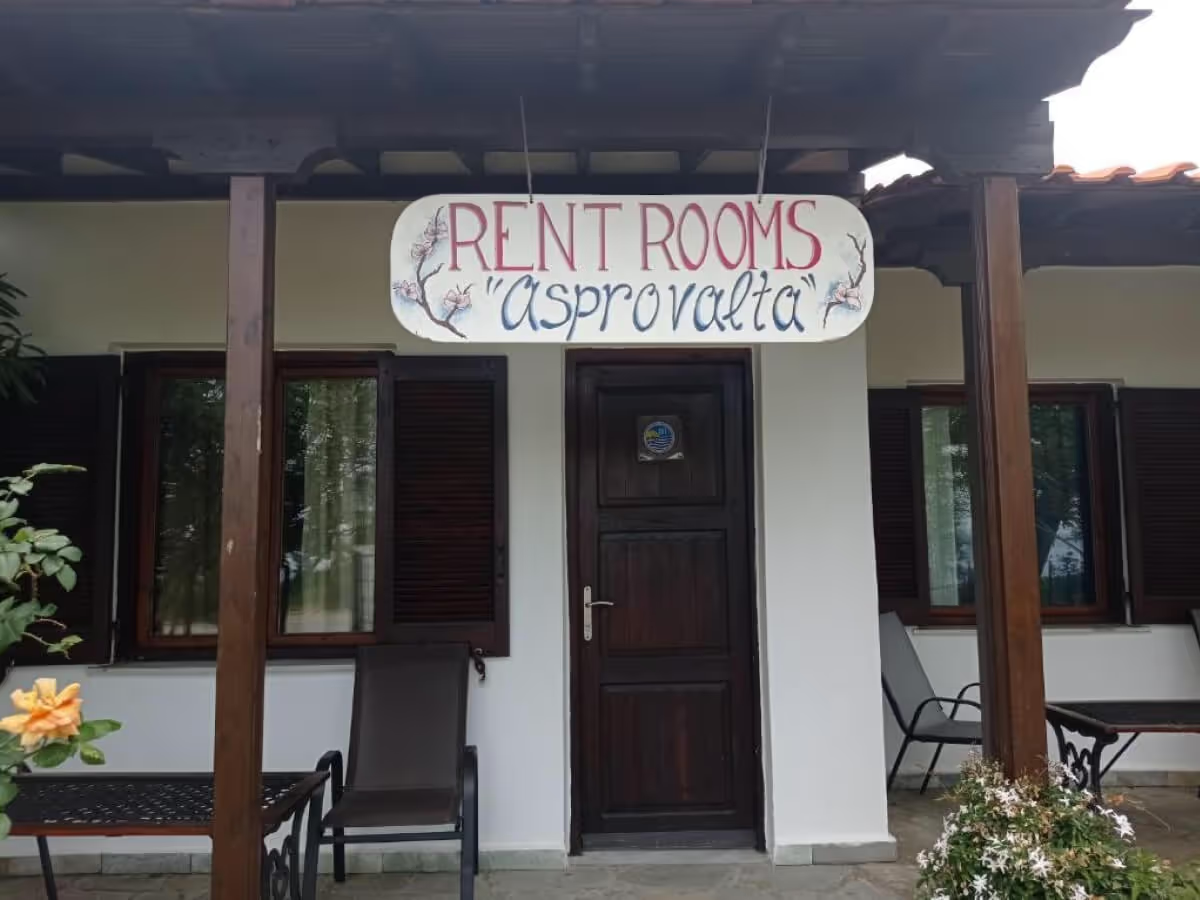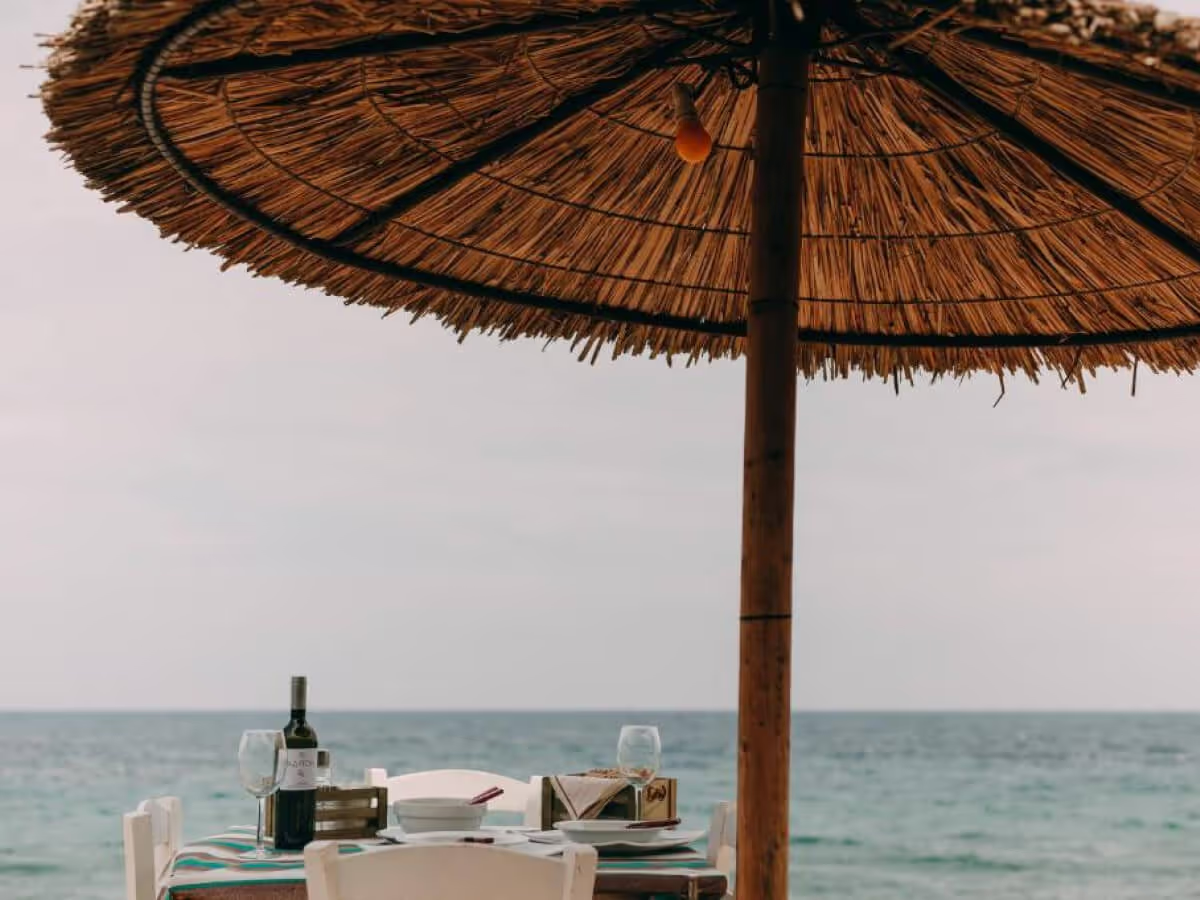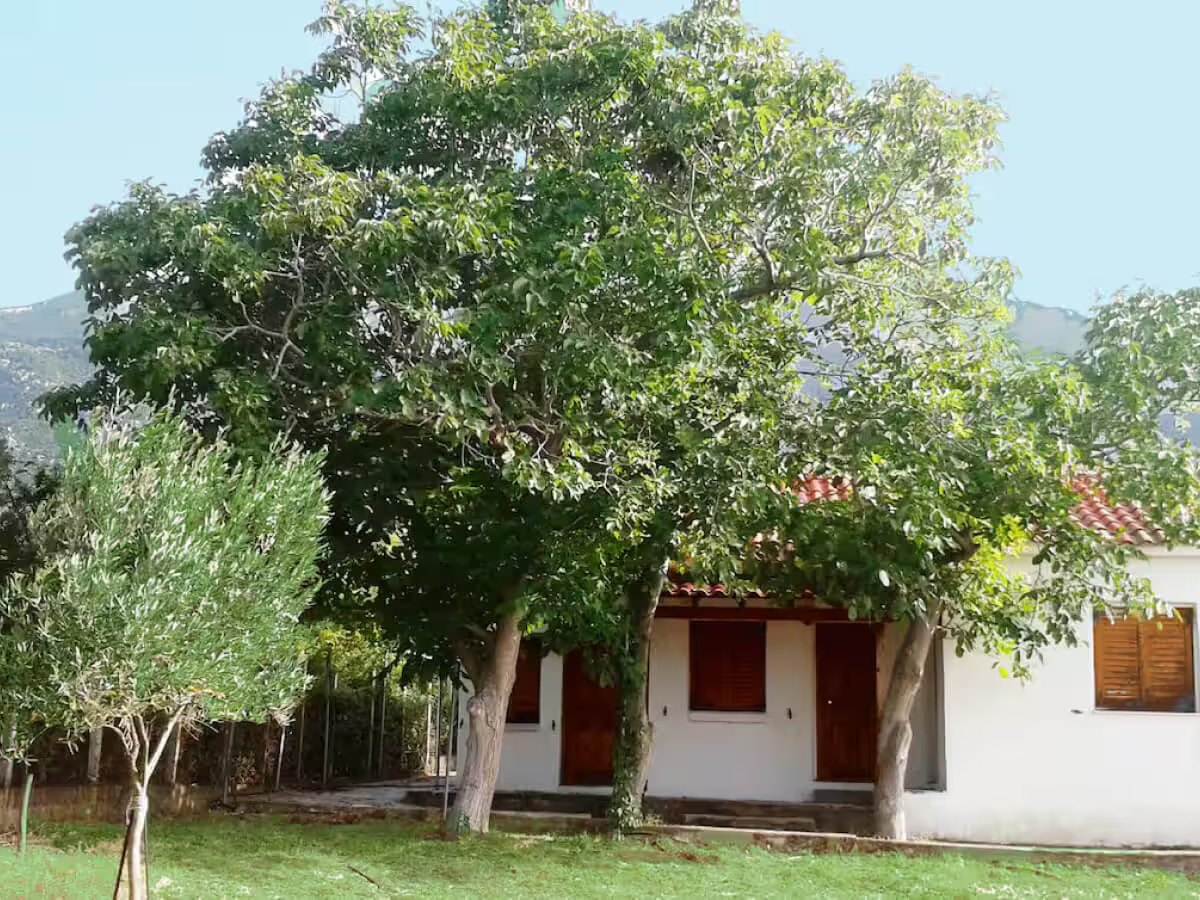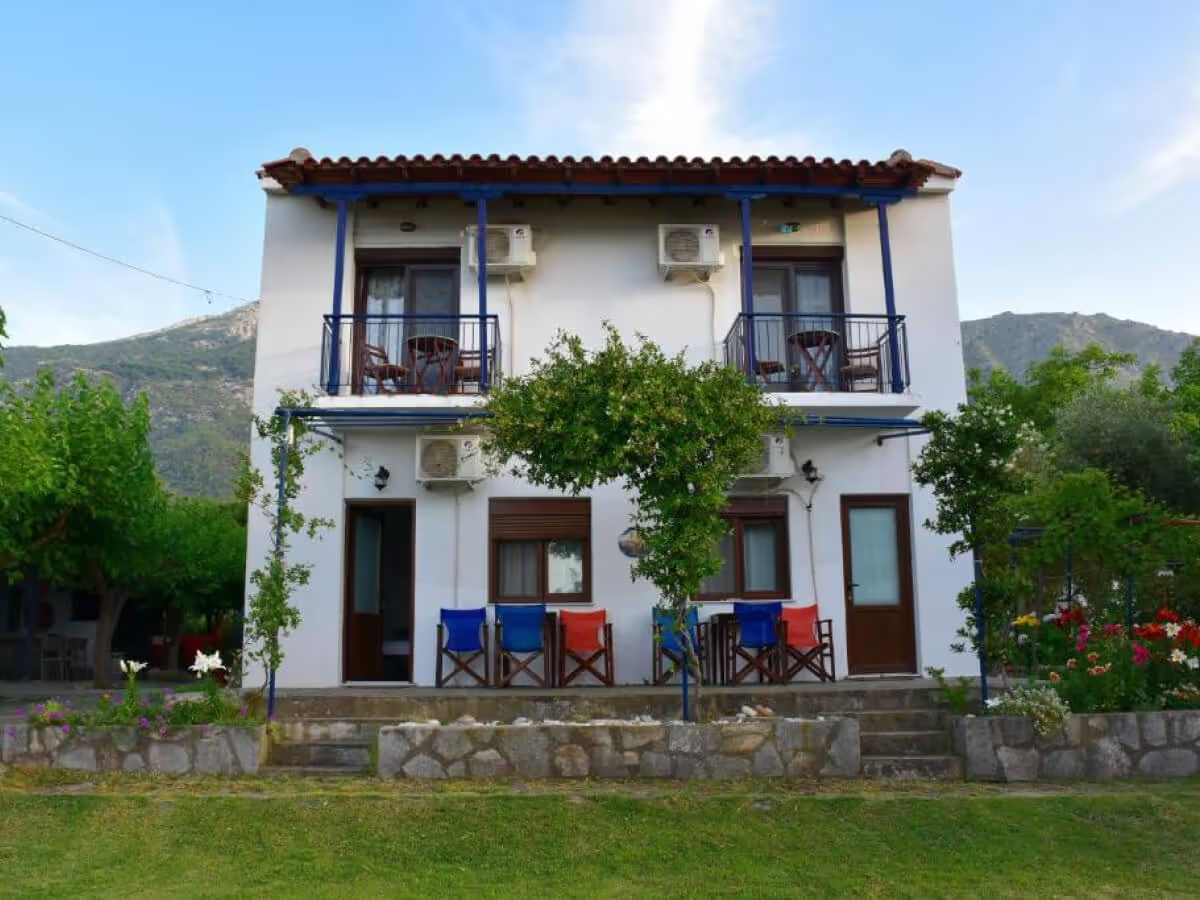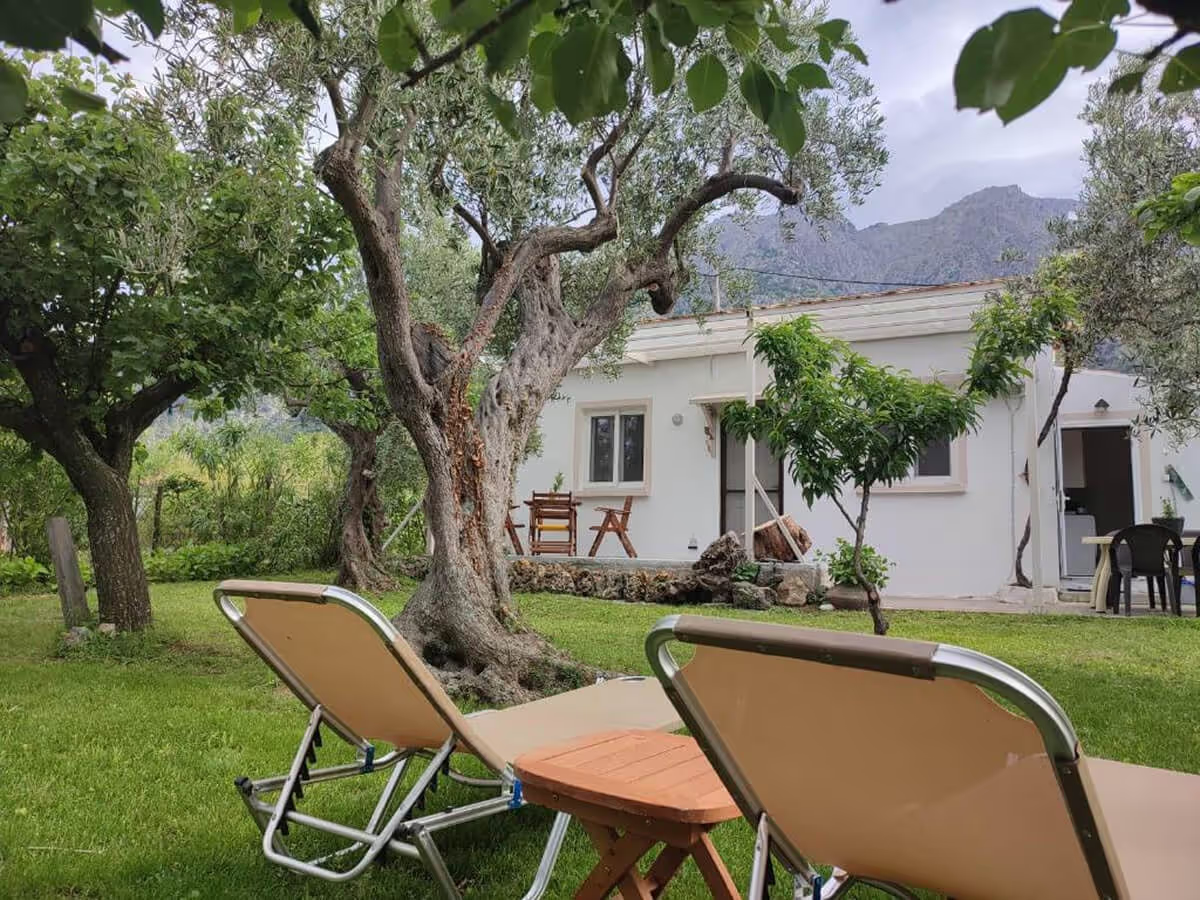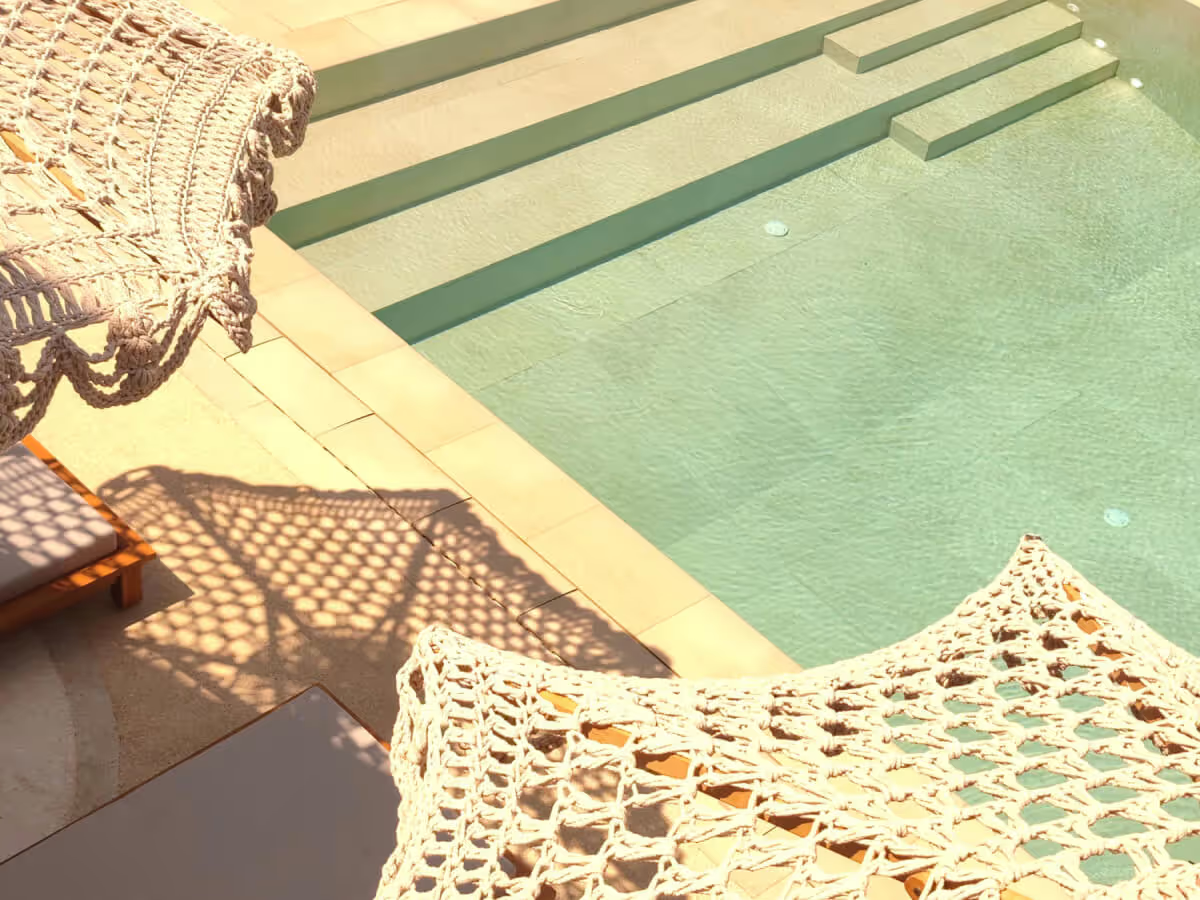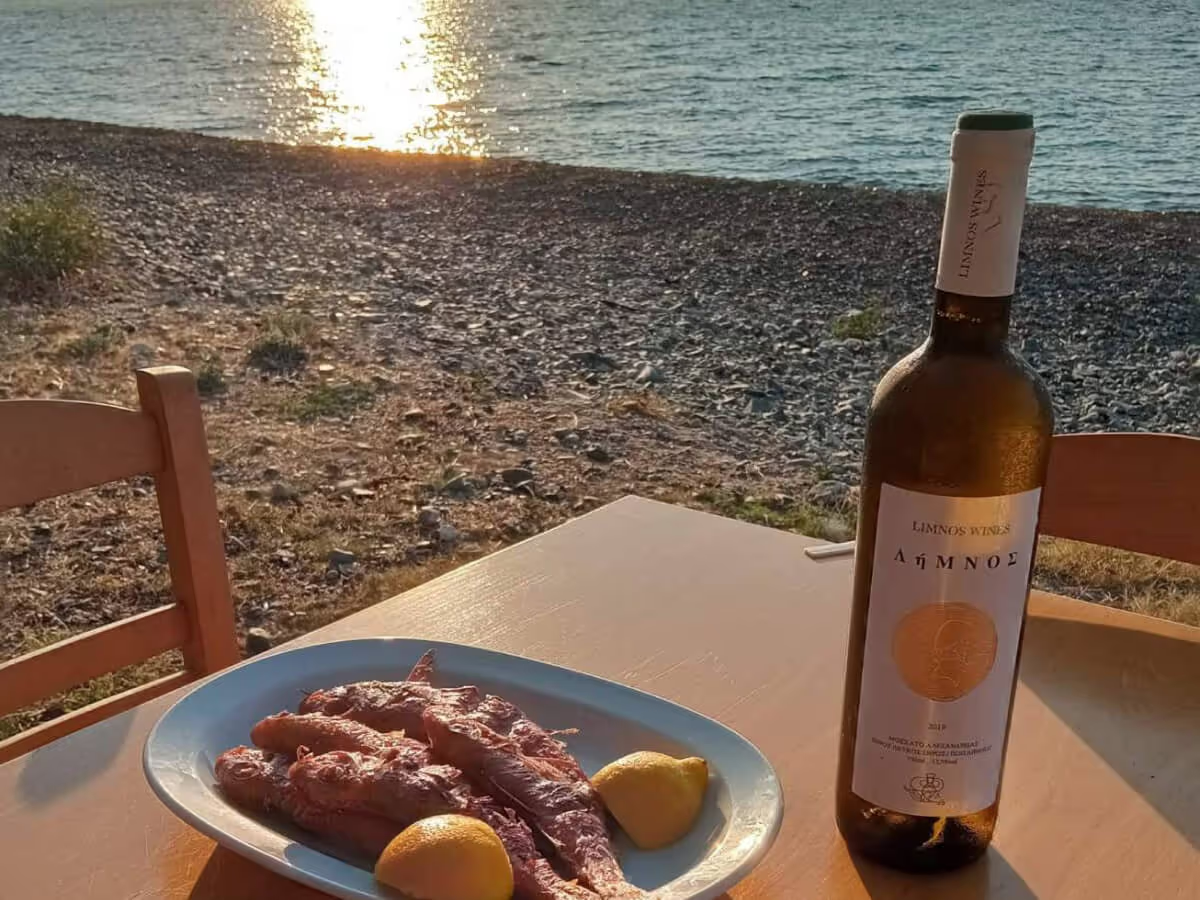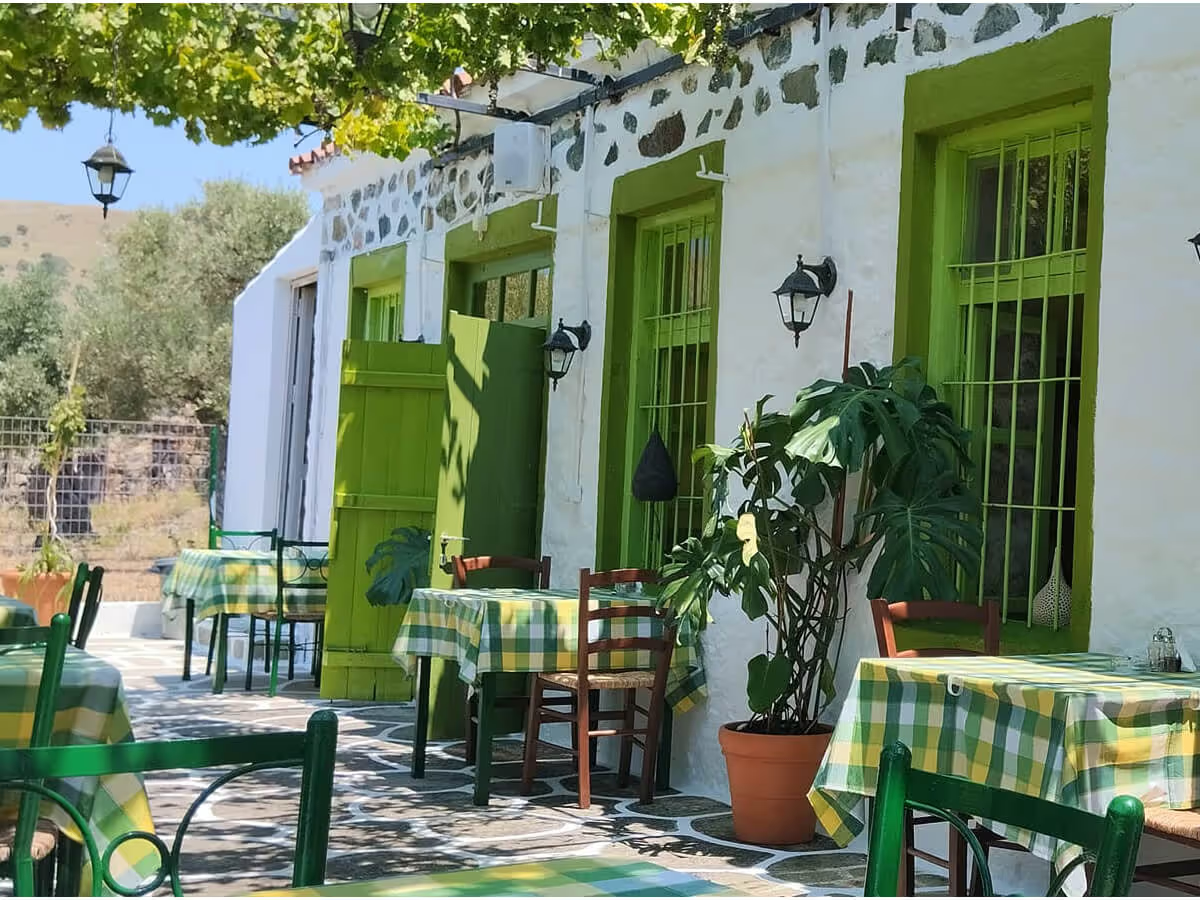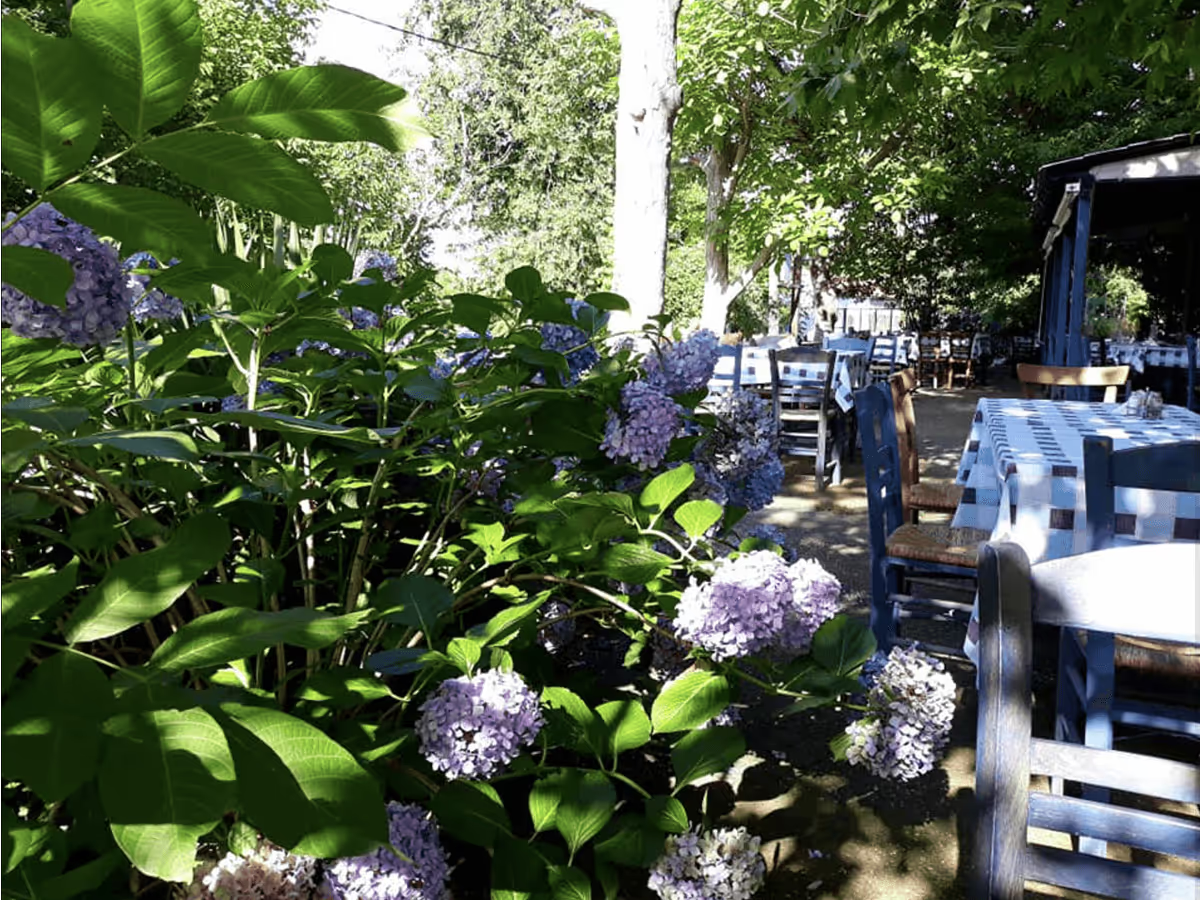Absolutely. Samothraki is genuinely excellent for families. The island is safe, with low crime and minimal traffic dangers. Beaches are family-friendly—Pachia Ammos has shallow warm water ideal for children. Hiking offers family options (easy walks like Gorge trails, kid-friendly moderate routes, challenging peaks for adventurous families). Children enjoy natural pools and waterfall swimming—refreshing and exciting. Villages are walkable and safe. Food accommodates most tastes. Taverna culture welcomes family groups; Greeks love children and will dote on them. Costs are affordable, extending family budgets. Lack of nightlife means peaceful evenings—not rowdy party scenes. The slower pace suits families avoiding overwhelming overstimulation. Challenges include limited amenities compared to resort destinations and unpredictable infrastructure in remote areas. Summer heat requires planning and hydration for small children. Overall, families consistently rate Samothraki highly, particularly those valuing nature immersion and authentic culture over entertainment infrastructure. Children often list Samothraki trips as childhood highlights—swimming in waterfalls beats theme parks.
Why do visitors say Samothraki changed their lives?
Samothraki's impact is profound and deeply personal. Visitors consistently report transformative experiences—not through luxury or excitement, but through slowing down, connecting with nature, meeting themselves, and experiencing authentic culture. The island's remoteness creates forced disconnection allowing mental clarity. The natural beauty inspires awe and perspective-shifting. The simplicity and community orientation offer counterculture to fast-paced modern life. Locals' warmth creates belonging feelings. Challenging hikes build confidence. Swimming in pristine natural pools feels sacred. Time moves differently—days feel longer, moments richer, priorities clearer. Many visitors describe Samothraki as spiritual (not religiously but existentially). Some discover creative inspiration, others clarify life decisions, some find healing from burnout or grief. The island's lack of distractions forces confrontation with oneself—sometimes challenging, ultimately growth-producing. People return, repeatedly. Relationships formed feel deeper than typical tourism socializing. Whether attributable to location, timing, or psychology, Samothraki facilitates transformation. This isn't marketing; it's consistent visitor testimony. Come with openness to this possibility.
What can I do in Samothraki if I don't hike or swim?
While Samothraki emphasizes outdoor activities, non-active pursuits offer rich experiences. Photography enthusiasts find endless subject matter: dramatic landscapes, traditional villages, light on mountains, wildlife, and cultural moments. Village exploration appeals to cultural tourists—Chora, Profitis, and Therma offer authentic Greek village architecture, local life, and interaction with communities. The Sanctuary of the Great Gods satisfies history and archaeology interests. Cooking classes and wine tastings can be arranged through accommodations. Local markets in Chora offer organic produce and crafts. Taverna sitting with wine and writing appeals to creatives. Attending local celebrations (if timing permits) provides genuine cultural immersion. Beach lounging and reading is perfectly valid—sometimes the goal is slowing down. Meditation and spiritual practices resonate with Samothraki's energy. Photography workshops, art retreats, and wellness programs operate seasonally. Documentation of local life through journaling or art satisfies reflective travelers. The island welcomes all paces and interests—you don't need extreme activities to enjoy Samothraki.
Is Samothraki good for adventure travel, backpacking, or nomading?
Yes, Samothraki strongly appeals to adventure and nomadic travelers. The island's infrastructure (cheap accommodation, reliable ferries, good hiking, natural scenery) supports extended stays. Backpackers appreciate free activities (hiking, swimming in natural pools, beach time), camping options, and affordable dining. Adventure travelers find challenging hikes, rock climbing potential (unofficial), and water activities. Digital nomads find reasonable internet (though unpredictable), peaceful work environments, and low costs allowing months of travel on modest budgets. The community aspect attracts nomadic travelers—many stay months and build social networks with other long-term visitors. Samothraki's self-sufficient character means you can genuinely unplug if desired. Seasonal influx of young travelers creates social scenes in main villages without becoming party-focused. The lack of nightlife appeals to mature travelers but might disappoint those seeking club scenes. Overall, Samothraki ranks highly for independent travelers, extended-trip seekers, and those valuing authenticity over comfort.
What is the Sanctuary of the Great Gods and why does it matter?
The Sanctuary of the Great Gods is a 2,500-year-old ancient religious site ranking among Greece's most important archaeological locations. Dating to ancient times, the Sanctuary housed the famous Nike of Samothrace (Winged Victory) sculpture, now displayed in the Louvre and considered a masterpiece of ancient art. The site reveals how ancient Greeks worshipped and understood spirituality. Walking through the Sanctuary's ruins—ancient temples, theaters, and structures—immerses you in history. The attached museum displays artifacts explaining religious practices, daily life, and the site's significance. Beyond archaeology, the Sanctuary's mountain location offers stunning views combining history and natural beauty. A guided tour (highly recommended) adds context and meaning to stone foundations. Entrance fee is €8-10. Most visitors spend 2-3 hours exploring. It's not just for history enthusiasts—the Sanctuary's energy and historical weight resonate even with casual visitors. It's genuinely one of Greece's top historical experiences and particularly meaningful because it remains uncrowded.
Can I visit in winter and is it worth it?
Yes, and for specific travelers, absolutely worth it. Winter brings cooler, rainy weather (8-15°C/46-59°F), minimal tourists, closed restaurants and hotels, and profound solitude. This appeals to photographers seeking dramatic moody landscapes, writers seeking quiet inspiration, spiritual seekers, and travelers valuing solitude over sunshine. Hiking is feasible but muddy and slippery—suitable for experienced hikers with proper gear. Water sports are limited due to cold temperatures and rough seas. Many businesses close seasonally, reducing services but increasing authenticity. The island feels truly remote—genuine Greek island life without tourism infrastructure. Accommodation is cheaper and more available as owners reduce operations. Locals' daily lives proceed undisturbed by tourist disruption. If you crave authentic, uncommodified experience, winter delivers. If you require sunshine, swimming, and active tourism infrastructure, winter disappoints. Winter suits experienced travelers comfortable with uncertainty and self-sufficiency. Spring and fall offer winter's authenticity with better weather—perhaps optimal.
What is summer like on Samothraki compared to other times?
Summer (July-August) brings warmest weather (28-30°C/82-86°F), perfect swimming conditions (24-25°C/75-77°F), and peak visitor presence. Expect more tourists (by Samothraki's low-impact standards, still quiet compared to major islands), busier restaurants, potentially higher prices, and more services operating. Hiking during peak summer heat requires early starts (6-7am) and adequate water. The upside: warm nights for sleeping outdoors in hammocks or under stars, peak accessibility of all attractions, and social energy creating community among travelers. Unlike overcrowded destinations, peak summer Samothraki remains peaceful—you simply have more fellow travelers to meet. Water sports and swimming are optimal. Mountain villages remain quiet regardless of season. The trade-off isn't crowding but heat and peak pricing. Many travelers prefer June or September for superior balance of good weather, comfortable water, moderate crowds, and reasonable prices. If you visit July-August, stay in cooler mountain areas and shift activities to early mornings.
What's the best month to visit Samothraki?
The answer depends on your priorities. June and September offer ideal conditions: warm weather (25-28°C/77-82°F), comfortable water temperature (20-22°C/68-72°F), fewer crowds than July-August, and excellent hiking conditions. May and early October bring pleasant weather, cheaper accommodations, and fewer tourists. July-August offer warmest water (24-25°C/75-77°F) but peak crowds and prices. April features wildflower displays and mild weather (18-22°C/64-72°F) but water is cold (14-16°C/57-61°F). September offers summer weather with emptying beaches as families return to school. For specific activities: hikers prefer spring (wildflowers, cooler temperatures) or fall (stable weather, changing colors); swimmers prefer June-September; cultural immersion is best in shoulder seasons when tourism is moderate. Winter (November-March) brings rainy, cool weather (8-15°C/46-59°F), closed attractions, and minimal tourism—ideal for solitude seekers willing to sacrifice sunshine. Overall, June and September are objectively "best," but shoulder seasons offer better value and genuine experiences.
What if I have a medical emergency?
Kamariótissa has a small medical clinic (pandemonio) staffed by doctors and nurses, handling minor injuries and illnesses. Serious emergencies require helicopter evacuation to mainland hospitals in Alexandroupoli (30+ minutes) or Kavala. Ensure you have travel insurance covering medical evacuation—this is critically important for remote island travel. Pharmacies exist in main villages and carry common medications; bring prescriptions or tell pharmacists your symptoms for recommendations. Pre-existing medications should be brought from home in sufficient quantities, though common medications are available locally. Doctors and pharmacists typically speak English. Medical care is excellent quality and remarkably affordable by international standards. Common sense prevents most emergencies: stay hydrated during hikes, wear sun protection, use sturdy shoes on trails, and inform others of your plans. Elderly travelers or those with serious health conditions should discuss island suitability with their doctors before traveling.
What is the cost of visiting Samothraki per day?
Samothraki is remarkably affordable. Budget breakdown (per person/day): accommodation €35-60 (guesthouse to nice 3-star hotel), meals €20-35 (mix of taverna dinners and casual lunches), activities €10-20 (some free—hiking; some paid—guided tours, Sanctuary entry), transport €3-5 (if renting car). Total: €68-120/day for comfortable mid-range experience, or €40-60/day for very budget travelers, or €150+/day for luxury-seekers. This compares extraordinarily favorably to major tourist islands. Families often spend €80-100/day total because shared meal costs are lower. Multi-day accommodation rentals reduce per-night costs. Off-season (October-April) reduces prices 20-30%. Early season (April-May) and late season (September-October) provide best value with excellent weather. Activities like hiking are free; museums cost €5-8. Restaurants serving tourists cost slightly more than local eateries. Overall, Samothraki offers perhaps Greece's best value while maintaining excellent quality. You're not saving money by skimping; you're avoiding tourist-industry markups through lower commercialization.
What documents do I need and are visas required?
EU/EEA citizens need only a valid passport; no visa is required. Visa requirements for other nationalities vary by country—most US, Canadian, Australian, and New Zealand citizens receive 90-day tourist visas upon arrival without prior application. Check official Greek government sources for your specific nationality. Ensure passports are valid for at least 6 months beyond travel dates. No special permits or documents are required for Samothraki beyond standard entry to Greece. Travel insurance is highly recommended for medical emergencies and trip cancellations. Drivers need valid driver's licenses (International Driving Permit recommended but not always essential). Vaccination requirements occasionally change due to health situations—check current recommendations before traveling. Ferry travel requires no special documentation beyond your passport. Most practical advice: notify your embassy of travel plans, photocopy important documents, and carry digital copies in cloud storage.
What about mobile phone coverage and internet?
Mobile coverage exists from Greek providers (Vodafone, Cosmote, Wind) but is patchy in remote areas and mountains. Coastal villages and main towns have reasonable coverage, though mountains and valleys may lack signals. International roaming rates vary by provider; contact your provider beforehand. Local SIM cards (€10-20 with data) are excellent value and easily purchased at kiosks. WiFi is available at most hotels, restaurants, and cafés in populated areas, though speeds vary and connectivity isn't guaranteed everywhere. Internet quality is reliable in main villages but unreliable in very remote areas. Many visitors discover that limited connectivity is actually a feature—it forces disconnection and presence during the trip. If constant connectivity is essential for work, stay in Kamariótissa or Chora where WiFi is most reliable. Internet cafés exist but are rare. The unpredictable connectivity shouldn't deter visits—adjust expectations and use limited connectivity as an excuse to truly unplug.
What is the best way to exchange money or use ATMs?
ATMs are available in Kamariótissa and larger villages (Chora, Profitis) but limited compared to mainland Greece. Withdraw cash from ATMs before arriving on the island for security and convenience. Most rural businesses and traditional tavernas accept only cash. Larger hotels and some restaurants accept cards, but don't rely on it. Currency is the Euro (EUR/€). ATM withdrawal fees may apply depending on your bank—contact your bank before traveling to confirm international withdrawal accessibility and costs. Credit cards work at larger businesses but small family restaurants operate cash-only. Exchange rates at ATMs are typically better than currency exchanges. Pro strategy: withdraw cash in Alexandroupoli or Kavala before ferrying, then top up on Samothraki as needed. Inform your bank of travel dates and international spending to prevent card blocking due to fraud suspicion. Having cash provides flexibility and supports small local businesses that can't easily process card payments.
What local customs should I know?
Understanding Greek customs enriches your experience and demonstrates respect. Learn these essentials: Greeks value personal relationships over efficiency—building rapport before asking favors matters more than rushing transactions. Meal times are sacred social events—accept dinner invitations and plan for lengthy meals. Siesta (afternoon rest, particularly 2-5pm) is still respected—businesses may close and loud noise is frowned upon. Name days (Greek name-based holidays) are celebrated more than birthdays—locals mention them positively. Don't photograph locals without asking; it's considered disrespectful. Tipping isn't obligatory like US custom but leaving 5-10% for good service is appreciated. Loud behavior embarrasses Greeks—keep voices moderate. Being late is normal; schedules are approximate. Never point fingers to direct; use an open hand instead. Compliment food and hospitality; hosts take pride in provision. Accept offered coffee or water as basic hospitality—refusing can offend. These simple practices show respect and dramatically improve how locals treat you. Tourism requires cultural sensitivity.
What is Greek hospitality really like?
Greek hospitality (philoxenia) is legendary and absolutely real on Samothraki. Locals treat visitors as family, not customers. Expect warm greetings, helpful directions, restaurant owners inviting you to return, and spontaneous kindness. This reflects Greek cultural values emphasizing community and generosity. On Samothraki specifically, limited tourism means locals haven't become jaded—they genuinely welcome visitors and are curious about you and your countries. You might be invited for drinks, offered homemade food, or guided to secret swimming spots by locals who enjoy sharing their island. Learning a few Greek phrases (hello, thank you, how are you) dramatically improves interactions and demonstrates respect. Reciprocate hospitality by treating businesses respectfully, not bargaining unreasonably, and asking permission before photographing locals. The authentic exchange of human connection—what Samothraki offers—is what many travelers list as their trip's highlight. Remote island communities haven't lost the generosity that characterizes old-fashioned Greek culture.
Are vegetarian and vegan options available?
Yes, but less varied than meat-focused destinations. Greek cuisine has strong vegetarian traditions: horta (boiled vegetables), Greek salads with feta, fava (yellow split pea dip), saganaki (fried cheese), grilled vegetables, and bean soups feature on most menus. Vegan options exist but require communication—many dishes contain hidden animal products (butter in bread, lard in beans). Tell restaurant owners you're vegetarian/vegan; most accommodate cheerfully by modifying dishes. Larger villages have more vegetarian options than smaller ones. Shopping in local markets provides excellent produce for self-catering. Samothraki's tourism industry adapts to visitor needs, but menus remain primarily meat/fish-focused. If vegetarianism is essential to your trip, staying in accommodations with kitchen facilities allows preparing some meals. The trade-off is reduced authentic local dining experience. Most vegetarian visitors successfully navigate Samothraki by communicating dietary needs clearly and accepting that not every meal is perfectly vegetarian.
What is authentic Samothraki cuisine and where should I eat?
Samothraki cuisine reflects island traditions emphasizing fresh seafood, local vegetables, goat cheese, and olive oil. Must-try dishes include grilled octopus, fresh fish caught daily, local lamb, creamy feta cheese, horta (boiled greens with olive oil), and traditional pastries like loukoumades (fried honey pastries). Meals are leisurely social events—dining typically lasts 2+ hours because Greeks view eating as family/community time, not fuel consumption. Restaurant atmosphere differs from formal dining: casual seating, friendly owners who chat with customers, hand-written menus, and recipes varying based on daily catch or seasonal availability. Family-run tavernas in villages like Chora, Profitis, and Therma offer the most authentic experience and best food. Kamariótissa has more restaurant options but less character. Prices are remarkably cheap: €8-15 for excellent fresh fish, €5-8 for meat dishes, €15-20 for table wine. The wine is local and excellent—small producers create outstanding bottles available nowhere else.
Is it safe to swim alone on beaches?
Swimming safety depends on beach conditions and preparation. Popular beaches like Pachia Ammos and Lakoma have lifeguard presence during summer, making them safe for solo swimming. Quieter beaches don't have lifeguards, so swimming alone requires caution—inform someone of your plans, observe water conditions before entering, wear a float if nervous, and limit depth. Mediterranean strong currents occasionally occur, particularly at exposed northern beaches—ask locals about conditions before swimming. Never swim after consuming alcohol. Most beaches are safe, but responsible behavior matters. Summer water is calm compared to winter. Swimming in early morning or late afternoon means fewer swimmers but also less supervision. The island's small-community feel means locals notice visitors, providing informal safety. For peace of mind, many solo travelers buddy up with other visitors or hire guides for water activities. Local tavernas often become social hubs where solo travelers naturally connect—excellent for finding swimming companions.
Can I snorkel or dive on Samothraki?
Yes, absolutely. Samothraki offers excellent snorkeling with exceptional water clarity (20+ meter visibility) and rocky underwater terrain rich with Mediterranean marine life. Fish, octopuses, sea urchins, and occasionally sea turtles are visible. No commercial snorkeling tours operate (maintaining the island's low-impact philosophy), but you can snorkel independently from beaches. Bring your own equipment or rent locally in Kamariótissa. Popular snorkeling spots include rocky areas around Kipos, Therma, and northern coast coves. Scuba diving possibilities exist but are limited—no formal dive shop, but arrangements can be made through tour operators for experienced divers. The underwater experience is less developed than resort dive destinations, which appeals to purists seeking authentic exploration rather than infrastructure. For the best underwater experience, combine snorkeling with hikes to secluded coves where marine life is abundant and other swimmers rare.
What are the best beaches on Samothraki?
Samothraki offers diverse beaches for different preferences. Pachia Ammos is the island's longest sandy beach—perfect for families, with shallow warm waters and tavernas. Lakoma offers quieter sandy shores with fewer crowds and charming village character. Kipos combines a pebble beach with abundant tavernas and local energy. Therma features unique thermal springs, creating warm spots in the sea—a distinctive experience. Vatos is small and secluded, ideal for privacy seekers. Lakkos offers wild, undeveloped character with fewer amenities but authentic appeal. Unlike crowded Mediterranean beaches, Samothraki's beaches rarely feel packed. You can often find solitude even in July-August. Water clarity is exceptional—visibility exceeds 20 meters in many locations, perfect for snorkeling. Each beach has distinct character: some are family-friendly, others attract backpackers, some cater to serious swimmers. Most visitors rotate between beaches to experience different vibes rather than staying at one location.
What wildlife might I encounter on Samothraki?
Samothraki's biodiversity is remarkable due to its preservation. You may encounter Mediterranean wild goats, rabbits, and numerous endemic bird species (including golden eagles). The surrounding waters host loggerhead sea turtles, particularly in summer. Mediterranean flora includes endemic wildflower species found nowhere else. The island's isolation created unique ecosystems—over 1,600 plant species exist on Samothraki, some found nowhere else on Earth. Most wildlife is shy and avoids humans, so encounters are usually distant (binoculars helpful for bird watching). Venomous snakes exist but are extremely rare and avoid humans. In forests, expect to hear birds and cicadas rather than see wildlife. Coastal areas might reveal turtles or Mediterranean seals. The real 'wildlife' treasure is botanical—spring hiking offers constant botanical beauty. If you're interested in serious wildlife observation, visit during migration seasons (spring/fall for birds) and hire a nature guide who understands local ecology and knows where to look.
How difficult are the hiking trails and what's the fitness requirement?
Samothraki offers trails for all fitness levels. Easy walks include the 1-hour Xiropotamos Gorge walk through dramatic canyon scenery or the Lakoma beach coastal paths. Moderate hikes include Fonias Waterfall (2-3 hours with moderate elevation gain) or the Emerald Ponds circuit (3-4 hours). Challenging hikes require good fitness: Mount Saos (6+ hours, steep sections, significant elevation gain of 1,611m) or Gria Vathra multi-pool hike combining several routes. No special equipment is needed for most trails—sturdy hiking boots, water, and sun protection suffice. The island's rewarding aspect is that moderate fitness enables participation in stunning hikes. Seasonal factors matter: summer heat requires early starts and proper hydration; spring mud makes trails slippery; fall offers ideal temperatures. Hiring a local guide (highly recommended) provides safety, historical context, and customization to your fitness level. Guides charge €50-100/day and enhance the experience significantly.
Can I swim in natural pools year-round?
Water temperature varies significantly by season, affecting comfortable swimming periods. Summer (July-August) features warmest water (22-25°C/72-77°F)—absolutely perfect for refreshing swims. June and September offer pleasant water (18-22°C/64-72°F). Spring (April-May) and fall (October-early November) require thicker wetsuits or higher cold tolerance (15-18°C/59-64°F). Winter months (November-March) are too cold for casual swimming unless you're an experienced cold-water swimmer. The fresh springs feeding natural pools are cold year-round because they originate from mountain snowmelt. Most visitors plan swimming-focused trips for June-September. However, the contrast between cool water and hot sun is actually refreshing during peak summer. If you're visiting outside peak season, bring a wetsuit or plan shorter water immersion breaks. The natural pools' pristine quality makes swimming worthwhile regardless of season.
What's the best hike on Samothraki?
The answer depends on your fitness level and goals. For most visitors, the Fonias Waterfall trail is the perfect choice: 2-3 hours roundtrip, moderate difficulty, stunning waterfall, natural swimming pools, and rewarding without being exhausting. The Mount Saos hike is the island's most iconic—a challenging 6+ hour summit quest with incredible panoramic views. The Xiropotamos Gorge walk offers easier exploration of dramatic canyon scenery. The Emerald Ponds circuit (3-4 hours) combines hiking with multiple natural pool swimming opportunities. For multi-day adventures, connecting multiple trails creates a backcountry experience. In spring (April-May), wildflowers make hikes particularly beautiful. Hire a local guide (highly recommended for challenging trails) to learn geology, ecology, and local history. Every season offers different appeal: spring for wildflowers, summer for swimming, fall for cooler temperatures and changing colors.
Are hotels expensive on Samothraki?
Samothraki is remarkably affordable compared to Greek islands attracting mass tourism. A comfortable 3-star hotel room costs €40-70/night, guesthouses €30-50/night, and apartments €35-60/night for two people. Mountain village accommodation runs even cheaper (€25-40/night). Compare this to Santorini (€150-300+/night) or Mykonos (€200+/night), and Samothraki offers exceptional value. Off-season (October-April, excluding holidays) sees 20-30% reductions. Early season (April-May) and late season (September-October) provide best value with excellent weather. For budget travelers, dormitory camping or mountain village rooms offer €15-25/night options. The affordability doesn't reflect lower quality—it reflects lower commercialization. You're not paying for a brand; you're paying for genuine hospitality. Many travelers comment that Samothraki offers the best value in Greece because you get authenticity without tourist-industry markup.
What types of accommodation are available?
Samothraki offers diverse lodging to suit different budgets and preferences. Traditional family-run hotels (3-4 stars) dominate the island, offering authentic Greek hospitality and character. Guesthouses and studios (often family-owned) provide affordable, cozy alternatives with kitchen facilities. Apartments are perfect for longer stays or groups, offering independence and value. Camping options exist for budget travelers seeking immersion in nature. Rooms in local homes (AirBnB-style) connect you directly with island families—a wonderful way to experience Samothraki culture. There are no luxury resorts or all-inclusive properties, which means no corporate anonymity—everywhere you stay is personal and genuine. Prices range from €30/night for budget rooms to €80-100 for nicer hotels. Quality is generally excellent because families take pride in their properties. Book directly when possible to support local businesses and often receive better rates.
Where should I stay on Samothraki?
Your accommodation choice depends on your preferences. Kamariótissa (main port village) offers the widest selection of hotels, restaurants, and services—convenient for ferry arrivals and departures but busier than other areas. Chora (main town) feels more authentically Greek with local character, traditional architecture, and proximity to hiking routes—perfect for culture seekers. Mountain villages like Profitis, Therma, and Lakkos offer quieter, more immersive experiences with limited tourism infrastructure. Beach-near settlements like Lakoma are ideal if beach access is priority. For first-timers, Kamariótissa or Chora offer best balance of amenities and experience. Experienced travelers often venture to smaller villages for authenticity. Most visitors stay 5-10 days, which allows exploring different areas. Book accommodation in advance during July-August but shoulder seasons (May-June, September) offer excellent availability and better prices.
What if I get motion sickness on ferries?
Yes, absolutely. The Alexandroupoli-Samothraki ferry is generally smooth with only occasional rough seas in winter. If motion sickness concerns you: take medication 30 minutes before boarding, sit on deck (fresh air helps), eat light meals beforehand, and stay hydrated. The 2-hour duration is brief compared to longer ferry routes in Greece. Additionally, psychological preparation helps—knowing the journey is short makes seasickness less likely. If you're extremely sensitive to motion, sailing from Kavala can sometimes offer smoother conditions on certain days. Don't let ferry concerns prevent visiting—thousands of sensitive travelers have made the journey successfully. If motion sickness remains a concern, Dramamine or prescription patches are effective preventatives. The island's magic is worth the minor risk.
How do I get to Samothraki and is it easy?
Samothraki is accessible by ferry from mainland Greece's northern ports. From Alexandroupoli (2 hours by ferry), you'll find the most frequent connection—ferries operate 1-2 times daily in summer, 3-4 times weekly in winter. From Kavala (1.5-2 hours by ferry), fewer sailings are available but still reliable. Getting there is straightforward: fly into Athens or Thessaloniki, rent a car, drive north to Alexandroupoli or Kavala, then take the ferry. Alternatively, some travelers fly into Thessaloniki and take a longer drive. Yes, it takes effort, but that journey is precisely why Samothraki remains unspoiled—casual tourists don't make the trip. Ferry rides are scenic and worth the journey. Once you arrive, you'll understand the pilgrimage was worthwhile. Book ferry tickets in advance during peak season.
Do I need a car on Samothraki?
A car is highly recommended and essential for fully exploring Samothraki. Public transport is limited (seasonal buses serve main villages), and many attractions require driving to trailheads or beaches. Car rental is affordable (€25-50/day) and widely available at ferry ports. With a car, you gain independence to explore at your pace, discover hidden beaches, access challenging hiking trailheads, and visit remote mountain villages. That said, if you're staying in Kamariótissa (main port) or Chora (main village) for the entire trip and prefer guided tours or taxis, you could manage without one. However, you'd miss significant island experiences. For 90% of visitors, having a car transforms the trip from limited to extraordinary. Roads are well-maintained and driving is straightforward.
Is the ferry journey to Samothraki difficult or long?
The ferry journey is quite pleasant and part of the Samothraki experience. From Alexandroupoli (most common), it's a scenic 2-hour sailing—long enough to enjoy views and shift into island mode, but short enough to avoid seasickness concerns. The ferry has comfortable seating, a café with snacks, and a relaxed atmosphere. The Kavala route takes 1.5-2 hours and is similarly pleasant. Ferry schedules are reliable year-round, though summer has more frequent sailings. Most travelers find the journey enjoyable rather than difficult. You'll see the island emerge from the sea—a magical moment as Mount Saos becomes visible on the horizon. Pro tip: Book tickets in advance during peak season (July-August), sit on deck for views, and enjoy coffee while contemplating your upcoming adventure.
What makes Samothraki different from other Greek islands?
Samothraki is Greece's best-kept secret and dramatically different from typical Mediterranean islands. Unlike crowded islands like Santorini or Mykonos, Samothraki remains wild, unspoiled, and authentically Greek. The island features soaring Mount Saos (1,611m) rising dramatically from the sea, over 60 freshwater springs, more than 100 natural rock pools for swimming, and dramatic gorges carved through lush mountains. The iconic Nike of Samothrace statue (Winged Victory) originated here at the 2,500-year-old Sanctuary of the Great Gods. Samothraki offers adventure, nature, and authenticity that package-tour destinations simply cannot match. It's perfect for travelers seeking genuine experiences over Instagram backdrops.
Can I experience 'real Greece' on Samothraki or is it too touristy?
Samothraki is one of the most authentically Greek islands you can visit. It's far less developed than major tourist destinations, with minimal chain restaurants or commercialization. You'll find family-run tavernas serving recipes passed down generations, locals who speak limited English (a bonus for immersion), genuine Greek hospitality, and villages where life moves at traditional Greek pace. The island has resisted mass tourism intentionally—there are limited hotel chains, no all-inclusive resorts, and no cruise ship crowds. Local fishermen still work from traditional boats, farmers grow olive trees in ancestral groves, and communities celebrate local traditions. If authentic Greek island experience is your goal, Samothraki exceeds expectations. You'll leave with real connections to Greek culture and people.
What's the most popular thing to do on Samothraki?
Hiking is the #1 draw for Samothraki visitors. The island's dramatic landscapes and accessible trails attract adventure enthusiasts from worldwide. The Mount Saos hike (1,611m summit) is the most iconic—a challenging full-day adventure offering panoramic views of the entire island and the surrounding sea. However, the Fonias Waterfall trail is the most popular all-around choice: moderate difficulty (2-3 hours), stunning scenery, natural swimming pools, and perfect for various fitness levels. Beyond hiking, visitors cite swimming in natural pools (Gria Vathra, Emerald Ponds) and relaxing on pristine beaches as favorite activities. The Sanctuary of the Great Gods attracts history enthusiasts. The island's combination of nature, history, and solitude makes it uniquely special.
Is Samothraki worth visiting if I only have a week?
Absolutely. One week is the perfect duration for Samothraki. You'll have enough time to relax, explore multiple hiking trails, visit several beaches, experience local villages, and truly immerse yourself in the island's culture without feeling rushed. Most visitors recommend 5-10 days as ideal—long enough to recover from ferry travel, engage in activities, and soak in the slower island pace. In just seven days, you can hike Mount Saos, swim in natural pools, visit the Sanctuary, explore charming villages, enjoy fresh seafood, and still have downtime. Many visitors extend their stay because they fall in love with the island's tranquility.
How is Samothraki better for nature lovers than other destinations?
Samothraki is a nature lover's paradise specifically because of what it's NOT. There are no resort developments destroying coastlines, no jet skis racing across beaches, no endless commercial boats. Instead, you get pristine wilderness: 60+ freshwater springs creating emerald pools, dramatic gorges with cascading waterfalls, forests filled with endemic Mediterranean plants, and remarkably diverse wildlife including sea turtles and rare birds. The island's mountainous terrain (one-third covered in forest) means you're walking through undisturbed ecosystems where nature hasn't been compromised by overdevelopment. Water is cold and pure, trails wind through untouched landscapes, and beaches remain peaceful. For hikers, swimmers, and nature photographers, Samothraki offers experiences impossible to find in commercialized destinations.
What's the phone/internet situation?
Mobile coverage from Greek providers (Vodafone, Cosmote, Wind) is available but patchy in remote areas. WiFi is common in hotels, restaurants, and cafes but speeds vary. Consider getting a local SIM for better rates. International roaming can be expensive - check with your provider. For reliable communication, stay near populated areas. Internet cafes are available in main towns. Don't rely on constant connectivity - embrace the digital detox aspect of island life.
Are there ATMs and places to exchange money?
ATMs are available in Kamariótissa and larger villages, but fewer than on mainland Greece. It's wise to withdraw cash in advance. Most restaurants and shops in tourist areas accept cards, but rural establishments prefer cash. Currency is the Euro (EUR). Exchange rates are best at banks rather than tourist areas. Carry a mix of cash and cards as backup. Inform your bank of travel dates to avoid card blocking. See our Travel Planner for more financial planning tips.
What should I pack for Samothraki?
Pack sun protection (sunscreen, hat, sunglasses), comfortable hiking boots, casual summer clothing, and a light jacket for cooler evenings. Bring swimwear and water shoes for beach/pool activities. Insect repellent is useful. For hiking, carry plenty of water and snacks. During cooler months, pack warmer layers. Pharmacy items and prescription medications should come from home. The island has basic shops but selection is limited. Hiking backpack and binoculars for nature watching are useful. Check weather before packing.
Is Samothraki safe for travelers?
Yes, Samothraki is very safe. It has a low crime rate and locals are friendly and welcoming. Standard travel precautions apply - secure valuables, stay aware of surroundings. Mountain activities require proper preparation and weather awareness. Swimming conditions vary by season and location. Medical facilities are available in Kamariótissa, though serious cases may require mainland transfer. Check our Essential Safety Guide for emergency contacts and detailed safety information.
Do I need a car or can I get around without one?
A car is highly recommended but not essential. Public transport is limited and infrequent. Car rentals are affordable and widely available. Taxis are available but expensive for frequent use. Many travelers hike or use local knowledge to navigate. If you prefer not to drive, consider hiring a guide for activities. Our rentals section lists vehicle options. For staying in one village, walking might suffice, but exploring the island fully requires transport.
What's special about the Sanctuary of the Great Gods?
The Sanctuary is an ancient religious site dating back 2,500 years. It housed the famous Nike of Samothrace (Winged Victory) sculpture, now displayed in the Louvre. The site features impressive ruins, a museum, and beautiful landscape views. The Sanctuary offers insights into ancient Greek religion and culture. Guided tours available through our Activities section provide deeper historical context. Entry fees apply; check current hours before visiting.
What local cuisine should I try?
Samothraki's cuisine features fresh seafood, local goat cheese, mountain herbs, and traditional Greek dishes. Don't miss creamy feta, fresh fish, squid, traditional moussaka, and pastitsio. Try the local wine and ouzo. Many restaurants source ingredients locally. Mountain villages serve hearty traditional food; coastal areas specialize in seafood. Visit our Where to Eat guide for restaurant recommendations. Dining is casual and affordable - embrace the Greek concept of long, leisurely meals.
What's the best time to visit Samothraki?
The best time to visit is May through September for warm weather and swimming. June and September offer ideal conditions with fewer crowds than July-August. Spring (April-May) is perfect for hiking with lush landscapes. Winter months (November-March) are quieter but cooler and wetter. Each season offers unique experiences - choose based on your preferred activities and crowd tolerance.
What accommodation options are available?
Samothraki offers diverse accommodation from traditional guesthouses and family-run hotels to apartments and camping facilities. Villages like Chora and Kamariótissa have the most options. Mountain villages offer authentic experiences. We recommend booking in advance during peak season (July-August). Check our Where to Stay guide for comprehensive listings and use our interactive map to find properties near your interests.
Where are the best beaches?
Top beaches include Pachia Ammos (longest sandy beach), Lakoma (quieter, excellent for families), Kipos (pebble beach with tavernas), Vatos (small and secluded), and Therma (unique thermal springs beach). Each offers distinct character. Northern beaches are more exposed to wind; southern beaches are calmer. Most are accessible by car or short walks. Our interactive map shows all beaches with amenities and descriptions.
How do I get to Samothraki?
Samothraki is accessible by ferry from the northern Greek mainland. The main ferry ports are Alexandroupoli and Kavala. Ferry services operate year-round, with more frequent sailings during summer months. The journey typically takes 1-2 hours depending on the port. You can book ferries online or at the port. We recommend checking updated ferry schedules on our Getting Here guide before your trip.
Is Samothraki suitable for families with children?
Absolutely! Samothraki is very family-friendly. Safe swimming beaches, easy nature trails, and stunning natural pools make it ideal for families. The island's relaxed pace and authentic Greek hospitality create a welcoming environment. Activities like the Gria Vathra pools, Fonias Waterfalls, and scenic walks are perfect for kids. Many accommodations and restaurants cater to families. It's a great destination to unplug and enjoy nature together.
What are the top hiking trails?
Popular trails include the Mount Saos hike (challenging, 6+ hours), Fonias Waterfall trail (moderate, 2-3 hours), Xiropotamos Gorge walk (easy-moderate), and the Emerald Ponds circuit (moderate, 3-4 hours). Difficulty varies from leisurely to challenging. Spring and early autumn offer the best conditions. We recommend guides from our Activities section for safety and to learn about local flora and fauna. Always check weather conditions before heading out.
































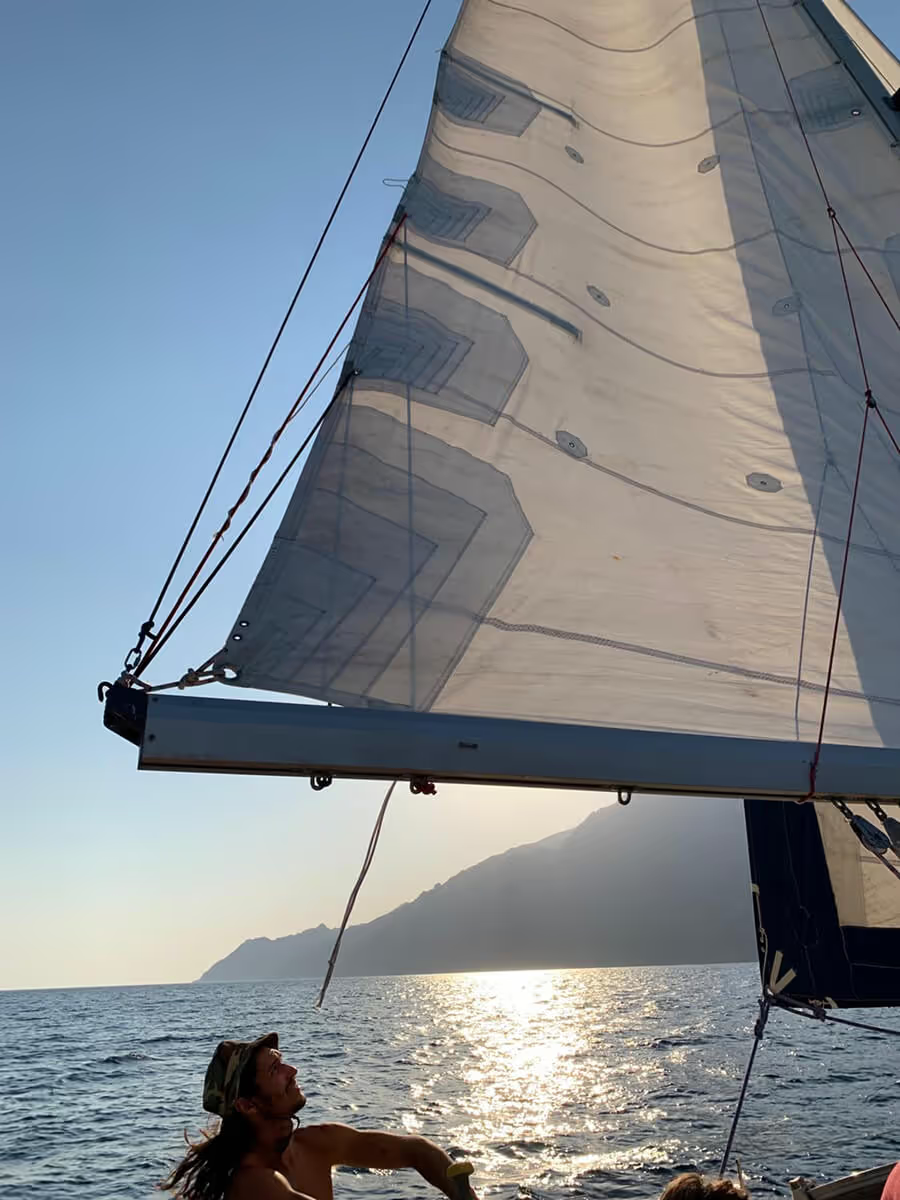






















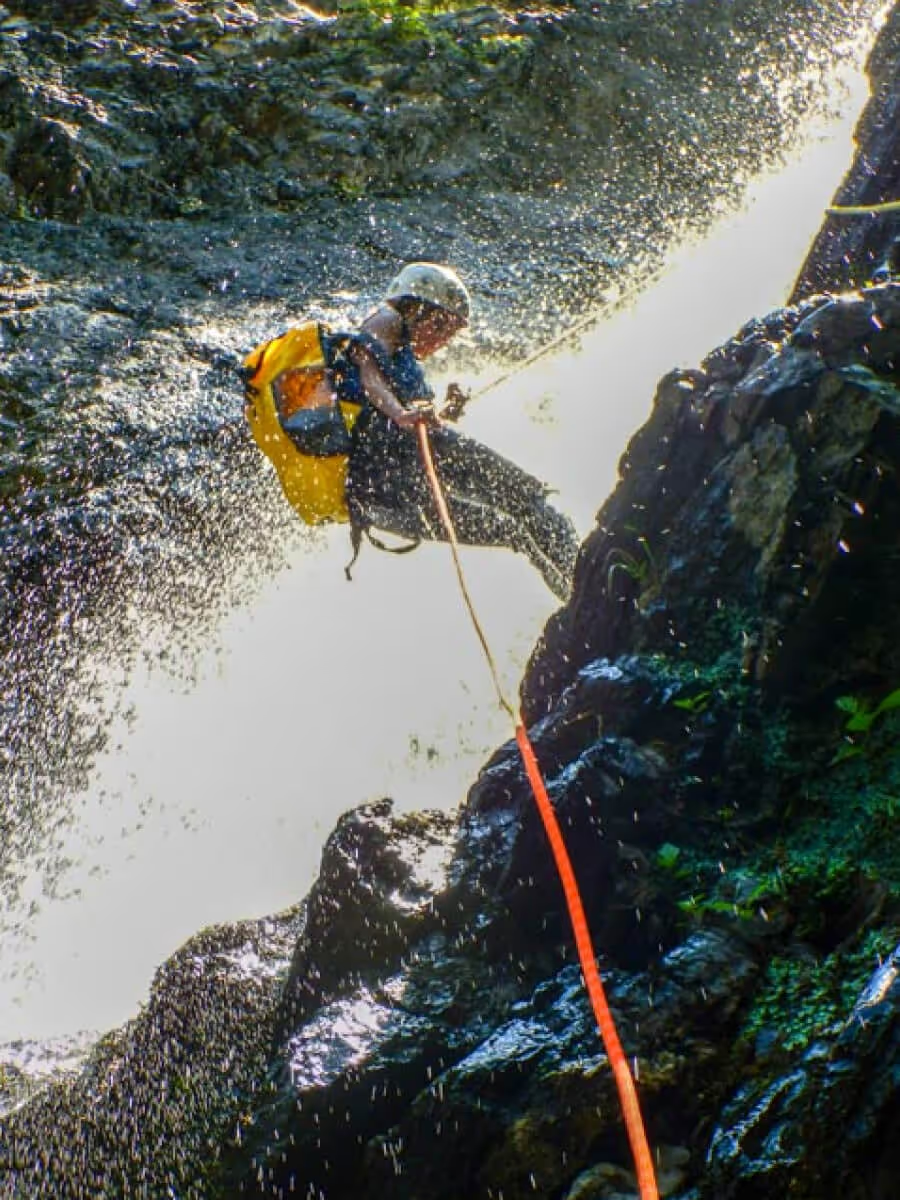





.svg)






